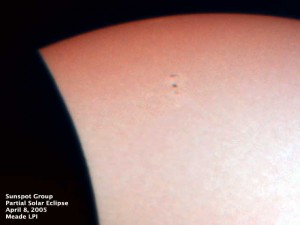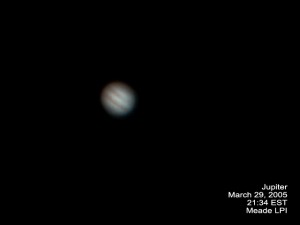Last night I found hidden away in a remote region of CNN.com, an article that mentioned a partial eclipse of the sun would be visible to much of North America… TODAY, beginning at 5:23 pm EST! It also mentioned that There wouldn’t be another one visible from within the United States until 2012.
That being the case I knew I had to trudge my gear out into the yard and not only have a look, but also try some more imaging as well with the Olympus D-460. Here are some of the better results of the event. As you’ll notice in these pictures (as with all my other D-460 images) that there is viginetting. At this time I am unable to find a way to get the CCD of the camera close enough to replicate what is seen by the naked eye through the lense. Although the adapter I have places the camera lense flush to the eyepiece… obviously the CCD is at least an inch further back. This results in the dark “cropping” effect. otherwise I would have resolved the entire disk in the images as it was clearly visible to my eye in the eyepiece. I’ll get it worked out somehow… even if I need to buy another still camera (which I’ve been thinking about anyway is the D-460 does not afford me much manual control over the camera at all).
There was a small sunspot group visible in to the naked eye in the southern hemisphere (south is up) but it washed out in the all the images except for P4080014, and P4080021. Even then they don’t look to impressive. Quite day on the sun I guess. 🙂
There are a few images here as well of the scope set up in the yard, as well as one of the tree AND clouds I was contending with in my backyard.










I took a few movies with the LPI on the 2X Barlow. We have the sunspots! This is a stack of 22 frames, contrast enhanced to bring out the sunspot group I noted in the southern hemisphere of the sun.
click to enlarge





























